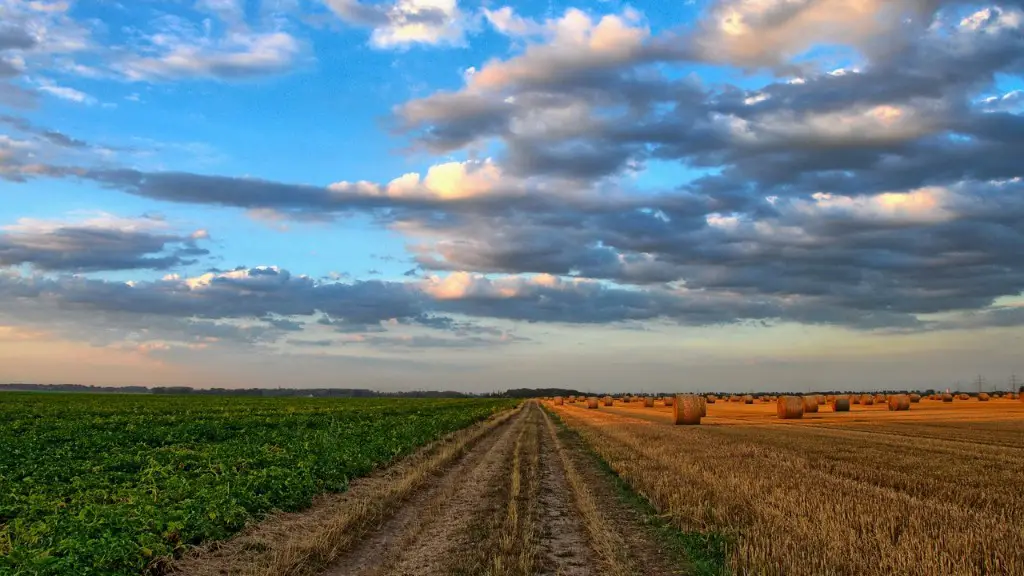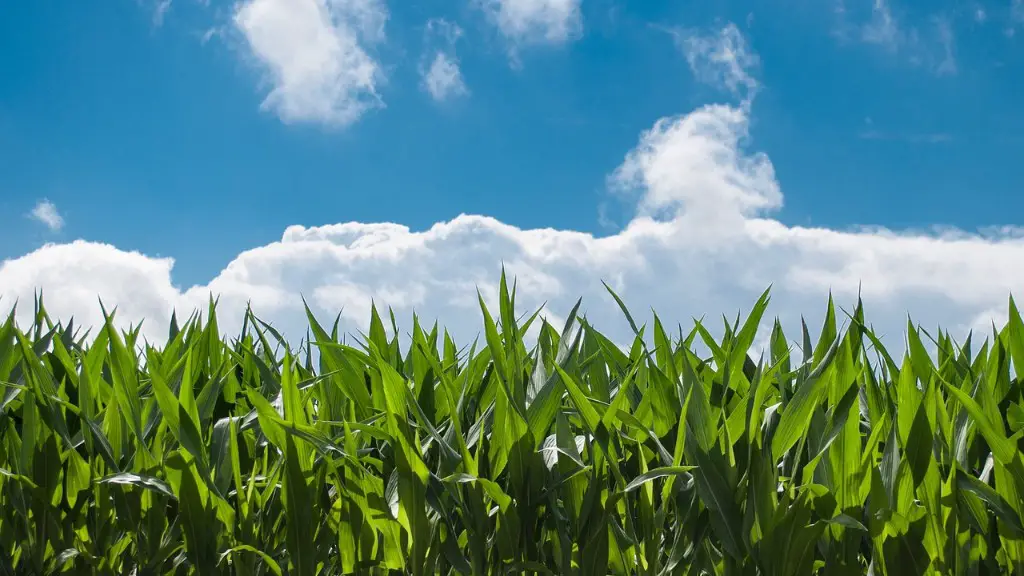Agriculture is a vital part of providing food for the world and sustaining life. However, it is not free from the harmful effects and wasteful consumption of our resources. A fundamental resource that needs consideration is freshwater, and approximately 70% of global freshwater use is for agricultural purposes. This begs the question: what percentage of freshwater is used for agriculture?
The answer is more complicated than you might expect. It depends on the location, agro-ecological context, and water use efficiency of the agricultural practices. In the developed world, between 50% to 70% of freshwater is used for agriculture. Developing countries, on the other hand, use around 85% of their freshwater resources for agricultural purposes. But even with this, not all of the water is utilized in crop production. The quality of water drawn for agriculture varies by country, too, ranging from high to low quality, often resulting in the formation of salt deposits on the land.
Besides location, some of the main drivers of freshwater used in agriculture are irrigation methods and technologies, which tends to vary from country to country. As such, precision irrigation is quickly gaining traction from farmers, as it helps to conserve water usage. This technology uses sophisticated systems, such as drip and sprinkler irrigation, to make sure that water is only applied to where it is needed. It also makes sure that the water applied is of a good enough quality to be useful to the crop.
Another key factor that affects freshwater use in agriculture is cropping intensity. This refers to the number of crops that are grown in the same land over a given time span. It is known to have implications for the amount of water required for successful crop production. That is why many countries are adopting cropping strategies that focus on more intensive agricultural practices such as reduced tillage, intercropping, eye catch, hedgerows, and mixed cropping.
Managing water use efficiently is a must for sustainable agricultural production. Land and water management practices such as zero tillage help to control erosion, conserve soil moisture, and increase crop yields. To further reduce water consumption for agricultural purposes, the implementation of proper drainage systems and the maintenance of irrigation channels is crucial. This does not only sustain the quality of water resources but also allows farmers to get the most out of their fields.
Impact of Transportation
The transportation of food also plays a role in the amount of water saved, as different ingredients must be shipped long distances before reaching grocery store shelves. For instance, when comparing food miles—the total distance traveled by an ingredient until the point of sale—foods grown in certain parts of the country or imported from another province require more resources to traverse that distance. This means that food producers must preplan their shipping methods, which helps reduce the amount of water they need to transport the goods.
In addition, there is an emphasis on improving agricultural yields, which, in turn, affects the amount of freshwater being used for irrigation. Modern techniques such as hydroponics, vertical farming, and agroforestry encourage higher crop yields in small spaces. Furthermore, these innovations reduce the need for huge open field farming, thereby reducing potential water wastage due to inefficient irrigation practices.
Agricultural production clearly plays a vital role in the portfolio of global fresh water use. However, countries should look into ways of improving their water management processes to ensure sustainable, long-term options. Education, behavioral change initiatives, and the adoption of innovative farming practices, like precision agriculture, all help to reduce the amount of freshwater used in agriculture.
Impact of Water Sources
Water use in agriculture is also dependent on the water source available for use, alongside the geographic region and seasonal weather conditions. For example, rain-fed agriculture is more commonplace in areas of low water availability and irrigation sources are more prevalent with higher water availability. The water use efficiency of such irrigation sources can be relatively low, as there may be leakages or overspray, leading to an excessive amount of water being used per head of crop.
Subsequently, farmers must take great care to limit their water use and make the most efficient use of the water source available. Government schemes like the Water Act 2020 in the UK and the National Water Security Plan of Australia are also striving to reduce water use in agriculture. Moreover, field-level innovations such as subsurface drip and shallow subsurface irrigation can reduce water loss, giving farmers a greater level of control over how they use water in their farming practices.
Harvesting rainwater and employing sustainable water harvesting techniques are also viable options for farmers. For example, in India, thousands of farmers have adopted the system of sculpting rocky hills and bunding for water harvesting. This is a simple and cost-effective method of water collection that reduces runoff and overflowing, leading to better availability of water for irrigation.
Apart from these practices, utilizing recycled and treated wastewater for agricultural purposes is a sound way of alleviating the demand for freshwater resources. While it has its own set of challenges, such as nutritional deficiency in crops and the potential harmful microorganisms it may contain, treated wastewater is a great source of alternative water that can be regularly used in agriculture.
Impact of Technology
Technological innovations can also play a role in reducing water use in agriculture. Wireless sensor networks monitor weather and soil conditions, allowing farmers to develop more water-efficient crop production strategies. Water guidance technologies help to accurately measure water uptake and reduce water loss due to runoff and overspray. Automation systems, such as irrigation automation and variable rate irrigation, are also helpful as they maintain soil moisture levels, adjust irrigation schedules, and offer customizable irrigation controls.
The use of climate models can also aid water conservation in agriculture. By utilizing this technology, farmers are able to understand in-season weather patterns and irrigation needs more accurately. Nonetheless, there are several challenges that farmers face in effectively utilizing this data. Interpreting the complex data sets is difficult, and farmers must have access to the appropriate equipment and expertise to be successful.
In conclusion, the amount of freshwater used in agriculture varies by location, irrigation methods and technologies, cropping intensity, water-related logistics, and seasonal weather conditions. Despite this, countries are striving to reduce this amount through various initiatives such as water conservation systems, sustainability practices, and education campaigns. Additionally, water sources, harvesting techniques, and technology can play a significant role in reducing water waste and helping to ensure freshwater resources are utilized responsibly.



